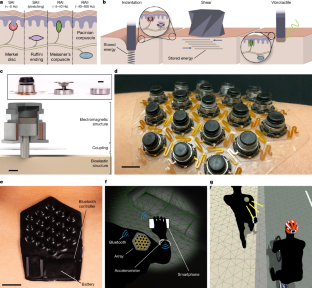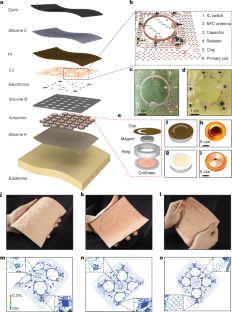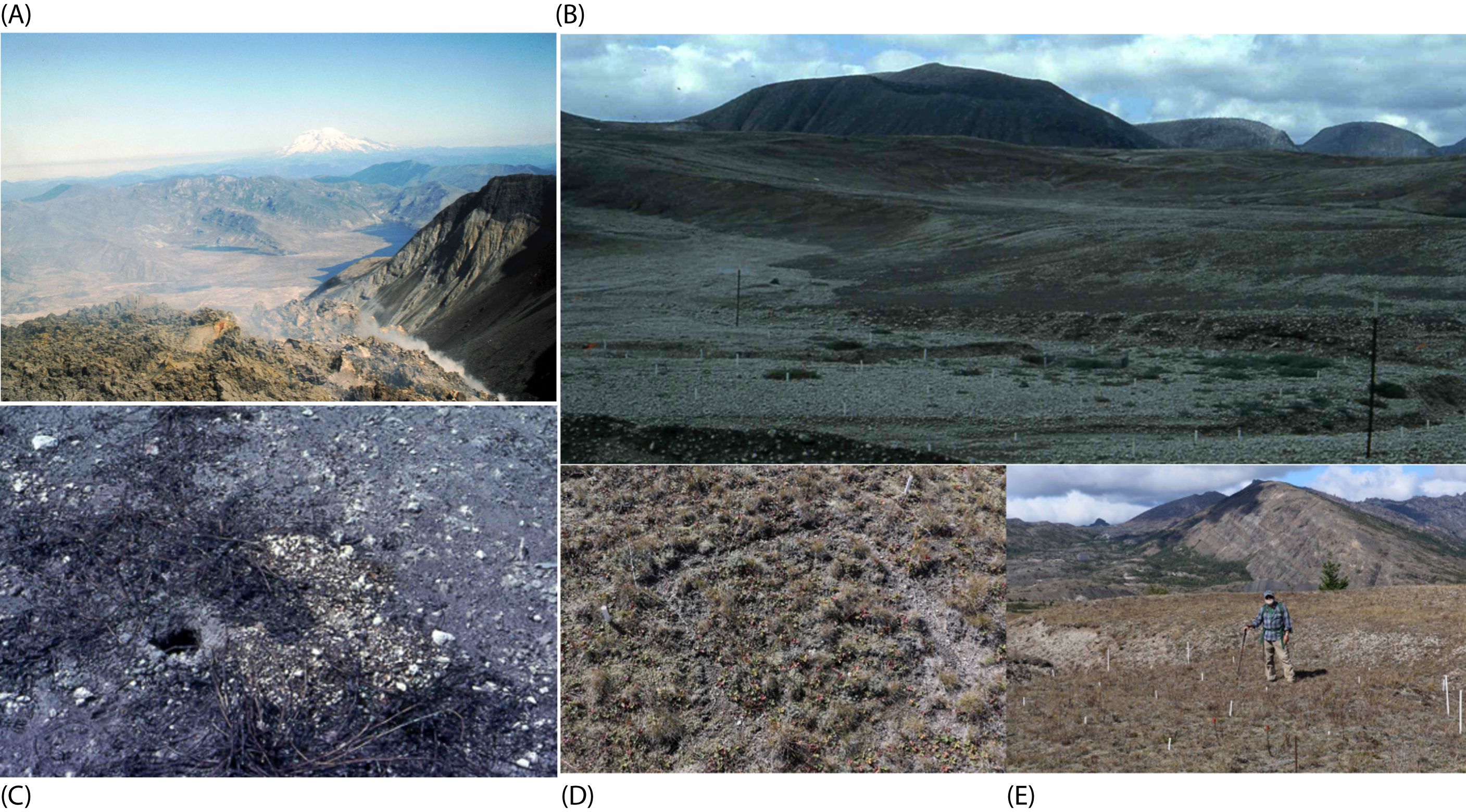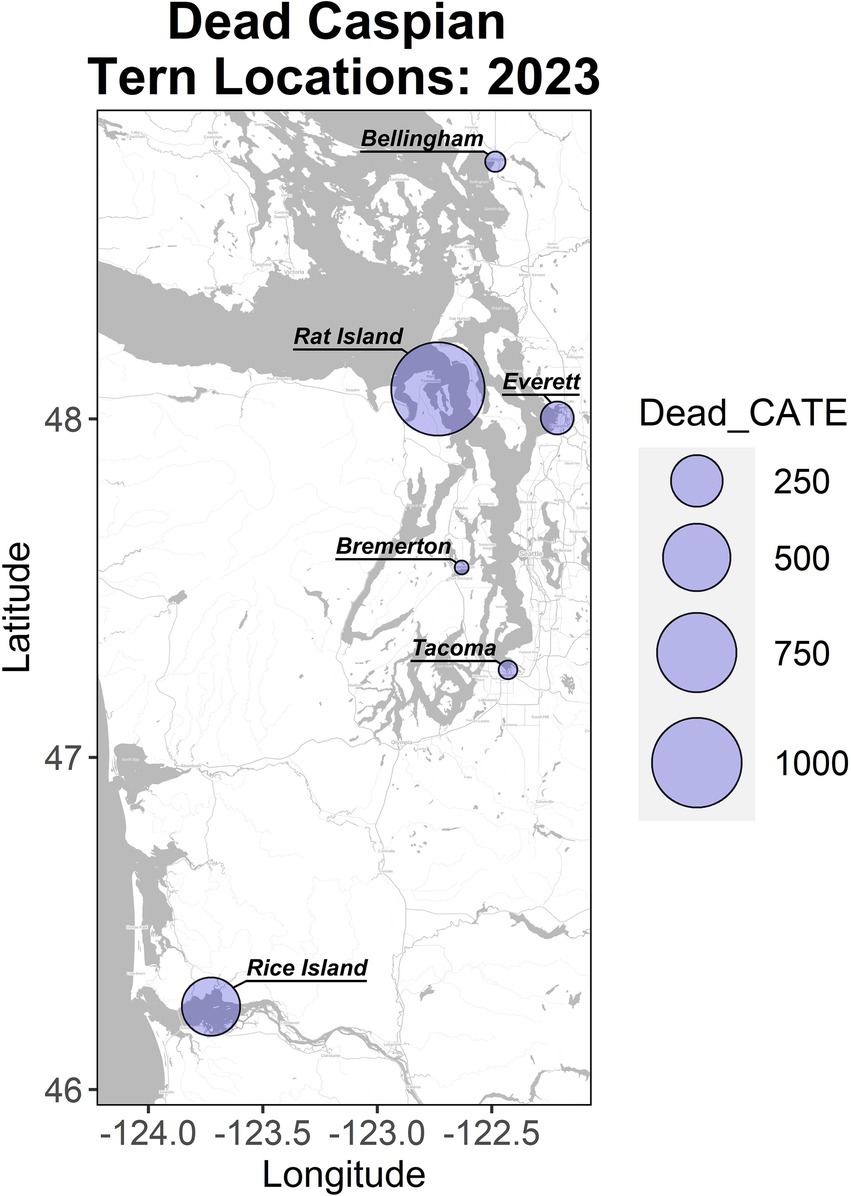2024-11-06 ノースウェスタン大学
<関連情報>
- https://news.northwestern.edu/stories/2024/11/new-haptic-patch-transmits-complexity-of-touch-to-the-skin/
- https://www.nature.com/articles/s41586-024-08155-9
- https://www.nature.com/articles/s41586-019-1687-0
触覚代替のための生体弾性状態回復 Bioelastic state recovery for haptic sensory substitution
Matthew T. Flavin,Kyoung-Ho Ha,Zengrong Guo,Shupeng Li,Jin-Tae Kim,Tara Saxena,Dimitrios Simatos,Fatimah Al-Najjar,Yuxuan Mao,Shishir Bandapalli,Chengye Fan,Dongjun Bai,Zhuang Zhang,Yanlin Zhang,Eunhye Flavin,Kenneth E. Madsen,Yi Huang,Luoqian Emu,Jingyang Zhao,Jae-Young Yoo,Minsu Park,Jaeho Shin,Aaron G. Huang,Hee-Sup Shin,… John A. Rogers
Nature Published:06 November 2024
DOI:https://doi.org/10.1038/s41586-024-08155-9

Abstract
The rich set of mechanoreceptors found in human skin1,2 offers a versatile engineering interface for transmitting information and eliciting perceptions3,4, potentially serving a broad range of applications in patient care5 and other important industries6,7. Targeted multisensory engagement of these afferent units, however, faces persistent challenges, especially for wearable, programmable systems that need to operate adaptively across the body8,9,10,11. Here we present a miniaturized electromechanical structure that, when combined with skin as an elastic, energy-storing element, supports bistable, self-sensing modes of deformation. Targeting specific classes of mechanoreceptors as the basis for distinct, programmed sensory responses, this haptic unit can deliver both dynamic and static stimuli, directed as either normal or shear forces. Systematic experimental and theoretical studies establish foundational principles and practical criteria for low-energy operation across natural anatomical variations in the mechanical properties of human skin. A wireless, skin-conformable haptic interface, integrating an array of these bistable transducers, serves as a high-density channel capable of rendering input from smartphone-based 3D scanning and inertial sensors. Demonstrations of this system include sensory substitution designed to improve the quality of life for patients with visual and proprioceptive impairments.
仮想現実と拡張現実のための皮膚統合型ワイヤレス触覚インターフェース Skin-integrated wireless haptic interfaces for virtual and augmented reality
Xinge Yu,Zhaoqian Xie,Yang Yu,Jungyup Lee,Abraham Vazquez-Guardado,Haiwen Luan,Jasper Ruban,Xin Ning,Aadeel Akhtar,Dengfeng Li,Bowen Ji,Yiming Liu,Rujie Sun,Jingyue Cao,Qingze Huo,Yishan Zhong,ChanMi Lee,SeungYeop Kim,Philipp Gutruf,Changxing Zhang,Yeguang Xue,Qinglei Guo,Aditya Chempakasseril,Peilin Tian,… John A. Rogers
Nature Published:20 November 2019
DOI:https://doi.org/10.1038/s41586-019-1687-0

Abstract
Traditional technologies for virtual reality (VR) and augmented reality (AR) create human experiences through visual and auditory stimuli that replicate sensations associated with the physical world. The most widespread VR and AR systems use head-mounted displays, accelerometers and loudspeakers as the basis for three-dimensional, computer-generated environments that can exist in isolation or as overlays on actual scenery. In comparison to the eyes and the ears, the skin is a relatively underexplored sensory interface for VR and AR technology that could, nevertheless, greatly enhance experiences at a qualitative level, with direct relevance in areas such as communications, entertainment and medicine1,2. Here we present a wireless, battery-free platform of electronic systems and haptic (that is, touch-based) interfaces capable of softly laminating onto the curved surfaces of the skin to communicate information via spatio-temporally programmable patterns of localized mechanical vibrations. We describe the materials, device structures, power delivery strategies and communication schemes that serve as the foundations for such platforms. The resulting technology creates many opportunities for use where the skin provides an electronically programmable communication and sensory input channel to the body, as demonstrated through applications in social media and personal engagement, prosthetic control and feedback, and gaming and entertainment.


